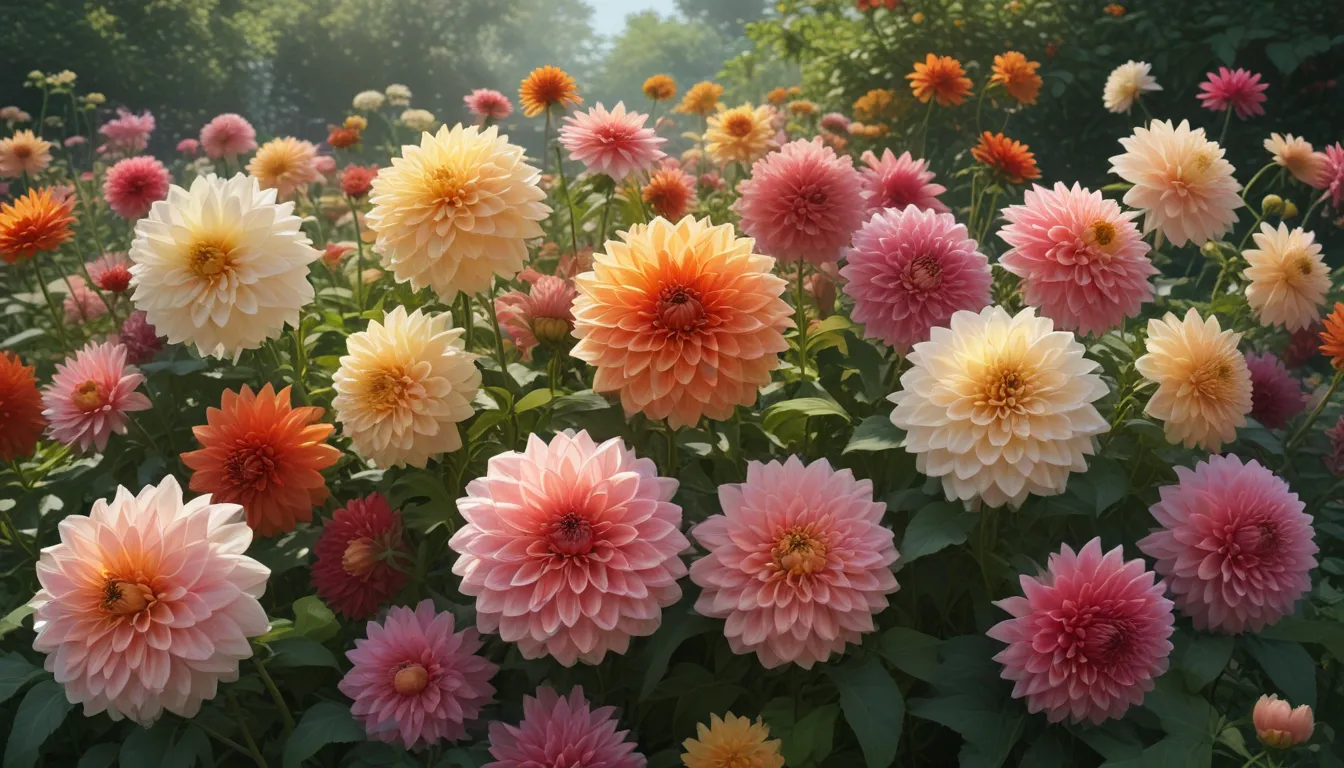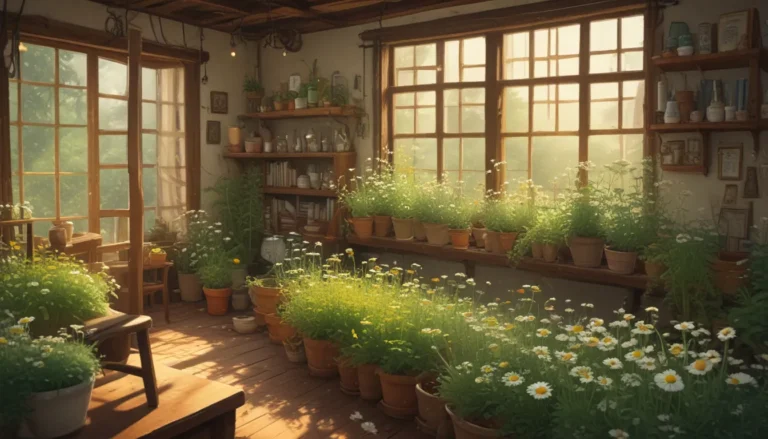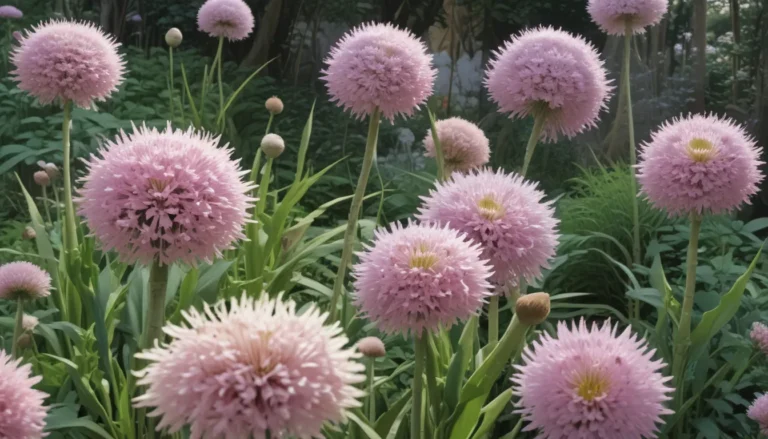Comprehensive Guide to Growing Delightful Dahlias: Late Summer Beauties

Ah, dahlias – the radiant stars of the late summer garden! With their vibrant colors and stunning forms, these flowers truly brighten up any space as the season starts to fade away. Whether you are a seasoned gardener or a beginner looking to add some flair to your garden, dahlias are the perfect choice.
So, let’s dive into the wonderful world of dahlias and explore everything you need to know to grow these delightful blooms successfully.
Unveiling the Beauty of Dahlias
Dahlias belong to the Asteraceae family and are tuberous perennials that often grow as annuals in many regions. Originating from Mexico and Central America, these striking flowers are known for their star-shaped blossoms that come in a wide range of colors and sizes.
The versatility of dahlias is unmatched – from petite two-inch blooms to massive dinner-plate-sized flowers, there is a dahlia for every garden. And with over 57,000 registered cultivars to choose from, the possibilities are endless.
Cultivation with a Rich History
The history of dahlias is as colorful as the flowers themselves. Cultivated by the Aztec people for food and medicinal purposes, these plants made their European debut in the late 1700s. Named after the Swedish botanist Andreas Dahl, dahlias quickly gained popularity across Europe and North America.
Propagation: A Closer Look
Growing dahlias can be done through cuttings, tuber division, or seeds. While seeds are unreliable due to hybrid cultivars, cuttings and tuber division ensure that you get plants identical to the mother plant.
Cuttings: Cloning through cuttings yields consistent results, with each tuber producing multiple new plants. With the right conditions, cuttings can thrive and be transplanted for a colorful display.
Tuber Division: An easier method of propagation, tuber division involves splitting the tubers to create new plants. Each division retains the qualities of the mother plant, ensuring uniformity.
Growing Your Dahlias
Dahlias thrive in sunny locations with well-draining soil rich in organic matter. With proper planting techniques, watering, and feeding, you can enjoy a stunning display of flowers from July to November.
- Amend the soil with organic matter and bone meal for strong root development.
- Plant tubers in mounded rows or domes, ensuring they are properly positioned.
- Water deeply and avoid over-fertilizing to promote bloom production.
- Keep the roots moist and provide afternoon shade during extreme heat.
Growing Tips for Successful Blooms
To ensure a bountiful display of flowers, follow these tips:
- Trim lower foliage to prevent diseases like powdery mildew.
- Provide afternoon shade during hot weather.
- Pick flowers regularly to encourage more blooms.
- Lift and store tubers in fall for healthy growth and division in spring.
Pruning and Maintenance Techniques
Proper pruning and maintenance are essential for healthy, compact plants that produce abundant flowers. Pinching out the main stem early in the season and providing support for larger varieties are key steps towards a successful dahlia garden.
- Prune lower foliage to prevent disease and promote healthier plants.
- Stake tall varieties to prevent toppling.
- Lift and store tubers in winter to ensure vigorous growth in the next season.
Selecting the Perfect Cultivars
With thousands of cultivars to choose from, selecting the right dahlias for your garden can be overwhelming. Here are a few standout varieties to consider:
- Bishop of Oxford: A peony-flowered variety with coral-orange flowers and purply-black foliage.
- Edge of Joy: Anemone-type flowers with golden centers and magenta streaks.
- Nadia Ruth: Laciniated pink flowers with twisted petals for a delicate appearance.
- Summer Tango Collection: A mix of ball flowers in shades of burgundy, orange, and purple.
- Thomas Edison: Double-petaled deep purple flowers with a striking appearance.
Managing Pests and Disease
While dahlias are resistant to deer and squirrels, they are susceptible to pests like aphids, mites, and thrips. Regular monitoring and control measures such as beneficial insects and insecticidal soap can help keep these pests at bay.
Common diseases like gray mold and powdery mildew can also affect dahlias. Proper planting techniques, adequate air circulation, and removal of infected parts can help prevent these diseases from spreading.
Best Uses in the Garden
Dahlias are incredibly versatile and can be used in various ways in the garden:
- Taller varieties are great for adding height to borders and mixing with other perennials.
- Shorter varieties work well in the front of beds or as borders.
- Dwarf varieties are perfect for containers, patio pots, and window boxes.
- All varieties are ideal for cutting gardens, attracting pollinators, and adding color to the landscape.
Quick Reference Growing Guide
Here’s a quick summary of essential details to help you grow dahlias successfully in your garden:
- Plant Type: Tuberous flowering bulb
- Flower/Foliage Color: Various colors with mid-green to purply-black foliage
- Native to: Mexico, Guatemala, and Central America
- Hardiness (USDA Zone): 8-11
- Bloom Time: July-November
- Exposure: Full sun
- Spacing: 9-18 inches
- Height: 9-60 inches, depending on the cultivar
- Water Needs: Medium to high
- Common Pests: Aphids, caterpillars, mites, thrips, slugs, snails
- Common Diseases: Gray mold, mosaic wilt, powdery mildew, stem rot, verticillium wilt
Embrace the Beauty of Dahlias
In conclusion, dahlias are the darlings of the late garden, offering a burst of color and elegance when most plants are fading away. With proper care, attention to detail, and selection of suitable cultivars, you can transform your garden into a dazzling display of dahlias.
So, unleash your creativity, explore the world of dahlias, and let these beautiful blooms bring joy and vibrancy to your late summer garden. Share your experiences with dahlias in the comments below and inspire others to cultivate these delightful flowers in their own gardens!





